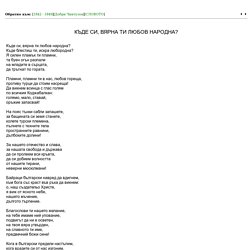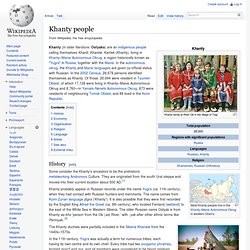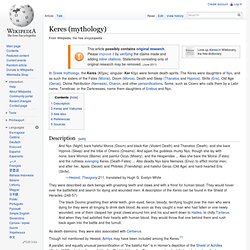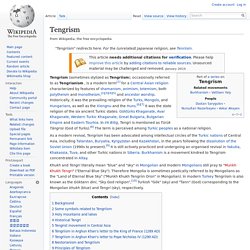

Добри Чинтулов - 1842 - 1849. Обратно към: [1842 - 1849][Добри Чинтулов][СЛОВОТО] Къде си, вярна ти любов народна?

Къде блестиш ти, искра любородна? Я силен пламък ти пламни, та буен огън разпали. Alp demon at DuckDuckGo. Lapti – Russiapedia Of Russian origin. MYTH INDEX, Greek Mythology. Utah State University Folklore Series. Get the Browse all RSS feed Subscribe to our feed To enable the Browse all RSS feed, simply drag this link into your RSS reader.

Follow index. Website Jaap Leegwater - Home. Zahari Zograf. Zahariy Hristovich Dimitrov (Bulgarian: Захарий Христович Димитров) (1810–1853), better known as Zahari Zograf (or Zahariy Zograf; Захари(й) Зограф) is arguably the most famous Bulgarian painter of the Bulgarian National Revival, noted for his church mural paintings and icons and often regarded as the founder of secular art in Bulgaria due to the introduction of everyday life elements in his work.

Zahari Zograf was born in the town of Samokov in 1810 and was taught by his brother Dimitar Zograf, with whom he later worked together, as his father died early. A spiritual student of Neophyte of Rila since 1827, he became an equal partner of his brother at the age of 21 in 1831, i.e. he was proclaimed a master. Zahari Zograf lived and worked on Mount Athos between 1851 and 1852, where he decorated the outer narthex of the Great Lavra. He also did several church donor portraits in his later years, also leaving a large number of unrealized sketches after his death from typhus on 14 June 1853. The Centre of Cultural History and Folkloristics in Estonia. Following the instalment of optical line in the museum, servers Haldjas and Kirmus have been connected to the new server system, and the first subserver has been supplied with FreeBSD.

Images of the new server room and technology acquired through LABOR project are available at Overview of data service connected with the project available at The questionnaire and strategy for the pilot project of school lore collection among Russian schoolchildren, planned to early winter 2008, has been accepted. The pilot project will be carried out in five schools, one of these a bilingual Estonian-Russian school. Кръстова Гора: история,святост... и камък за препъване [Статии ЦВ] През последните години сред православните християни в нашата страна придоби широка известност манастирът “Св.
![Кръстова Гора: история,святост... и камък за препъване [Статии ЦВ]](http://cdn.pearltrees.com/s/pic/th/image-76283808)
Троица” Кръстова гора, като християнска светиня и място за поклонение. Започнаха да се организират поклоннически пътувания и днес тя е посещавана от огромен брой вярващи. За съжаление досега не е направено задълбочено изследване на тази православна светиня, а в момента това вече е невъзможно, тъй като след масовото строителство на връх Кръстов не могат да се направят археологически разкопки.
Освен това голяма част от хората, които можеха да дадат някакви сведения, вече не са сред живите. В същото време в пресата се появиха много статии “за” и “против” Кръстова гора, а също и лъскави брошури, пълни с взаимно отричащи се предания и разкази със съмнителна историческа и религиозна стойност. До средата на ХVII в. в Средните Родопи, макар и под османска власт, християнството процъфтявало.
В своите проповеди отец Григорий наричал Средните Родопи “Кръстогорие” или “Кръстата гора”. FINNISH GODDESSES AND GODS. Short list in english of Finnish Gods and Goddesses.

Long list in Finnish: Encyclopedia Mythica: mythology, folklore, and religion. Khanty people. History[edit] Khanty in front of Chum near Lake Numto Khanty man in Tomsk, Siberia Some consider the Khanty's ancestors to be the prehistoric metalworking Andronovo Culture.

They are originated from the south Ural steppe and moved into their current location about 500 AD.[1] Khanty probably appear in Russian records under the name Yugra (ca. 11th century), when they had contact with Russian hunters and merchants. Литература, критика, хуманитаристика - специализиран портал. Ethno Space. Keres (mythology) And Nyx (Night) bare hateful Moros (Doom) and black Ker (Violent Death) and Thanatos (Death), and she bare Hypnos (Sleep) and the tribe of Oneiroi (Dreams).

And again the goddess murky Nyx, though she lay with none, bare Momos (Blame) and painful Oizys (Misery), and the Hesperides ... Also she bare the Moirai (Fates) and the ruthless avenging Keres (Death-Fates) ... Also deadly Nyx bare Nemesis (Envy) to afflict mortal men, and after her, Apate (Deceit) and Philotes (Friendship) and hateful Geras (Old Age) and hard-hearted Eris (Strife). They were described as dark beings with gnashing teeth and claws and with a thirst for human blood. They would hover over the battlefield and search for dying and wounded men. The black Dooms gnashing their white teeth, grim-eyed, fierce, bloody, terrifying fought over the men who were dying for they were all longing to drink dark blood.
As death daimons, they were also associated with Cerberus. The Folklore Program. Orpheus & Eurydice vs. Izanami & Izanagi; Inanna vs Dumuzi Parallels. Tengrism. "Tengriism" redirects here.

For the (unrelated) Japanese religion, see Tenriism. Tengrism (sometimes stylized as Tengriism), occasionally referred to as Tengrianism , is a modern term[1] for a Central Asian religion characterized by features of shamanism, animism, totemism, both polytheism and monotheism,[2][3][4][5] and ancestor worship. Historically, it was the prevailing religion of the Turks, Mongols, and Hungarians, as well as the Xiongnu and the Huns.[6][7] It was the state religion of the six ancient Turkic states: Göktürks Khaganate, Avar Khaganate, Western Turkic Khaganate, Great Bulgaria, Bulgarian Empire and Eastern Tourkia.
In Irk Bitig, Tengri is mentioned as Türük Tängrisi (God of Turks).[8] The term is perceived among Turkic peoples as a national religion. Khukh and Tengri literally mean "blue" and "sky" in Mongolian and modern Mongolians still pray to "Munkh Khukh Tengri" ("Eternal Blue Sky"). Amazing Incredible! Slavic mythology. Many generations of Slavic artists were inspired by their national folklore: Ilya Yefimovich Repin, Sadko in the Underwater Kingdom (1876) Slavic mythology is the mythological aspect of the polytheistic religion that was practised by the Slavs before Christianisation.

The religion possesses many common traits with other religions descended from the Proto-Indo-European religion. Old Slavic religion evolved over more than a thousand years and some parts of it were from neolithic or possibly even mesolithic times. The Earth was worshipped as Mat Zemlya and there were no temples. Rituals were performed in nature. Norse religion. Norse religion refers to the religious traditions of the Norsemen prior to the Christianization of Scandinavia, specifically during the Viking Age. Norse religion is a subset of Germanic paganism, which was practiced in the lands inhabited by the Germanic tribes across most of Northern and Central Europe. Knowledge of Norse religion is mostly drawn from the results of archaeological field work, etymology and early written materials.
Terminology[edit] Mjölnir pendants were worn by Norse pagans during the 9th to 10th centuries. This Mjolnir pendant was found at Bredsätra in Öland, Sweden. Norse religion was a cultural phenomenon, and — like most pre-literate folk beliefs — the practitioners probably did not have a name for their religion until they came into contact with outsiders or competitors. Sources[edit] Knowledge about Norse religion has been gathered from archaeological discoveries and from literature produced after the Christianization of Scandinavia.[2] Literary sources[edit] Hittite mythology. Seated deity, late Hittite Empire (13th century BC) The understanding of Hittite mythology depends on readings of surviving stone carvings, deciphering of the iconology represented in seal stones, interpreting ground plans of temples: additionally, there are a few images of deities, for the Hittites often worshipped their gods through Huwasi stones, which represented deities and were treated as sacred objects.
Gods were often depicted standing on the backs of their respective beasts, or may have been identifiable in their animal form.[3] Overview[edit] Priests and cult sites[edit] Finnish paganism. The elk is a common image in many Finnish petroglyphs Finnish paganism shows many similarities with the religious practices of neighbouring cultures, such as Germanic, Norse and Baltic paganism. However, it has some distinct differences due to the Uralic and Finnic culture of the region. Finnish paganism provided the inspiration for a contemporary pagan movement Suomenusko (Finnish: Finnish faith), which is an attempt to reconstruct the old religion of the Finns. Deities[edit] Veles (Vles, Volos) Veles has several functions. He is the god of currency, riches and cattle, the deceased and inspiration for creative persons and thinkers.
At first sight these functions are not connected in any way, but I’ll try to unite them logically in my story to present the outlook of the pagan Slavs. Let us consider the etimology of the word Veles. he word Veles has evolved during 5 thousand years from words of the Proto Indo-European language. The word Veles has the Proto Indo-European root which means hairy. Its root transformed to various forms in various European languages.
Philosophical Folklore and the Reification Fallacy. Among the many things worth studying, one of the most interesting is what I call ‘philosophical folklore’. Folklore, of course, consists of micro-traditions passed down within communities as part of the ordinary ways of life of the people in those communities. We usually think of these micro-traditions as artistic, but much folklore is philosophical in character. Studying this kind of folklore, often fascinating in its own right, can be quite illuminating. Of all subjects in philosophy, I think informal logic tends to provide the richest veins of philosophical folklore. Reasoning and evaluating reasoning are things everyone has to do.